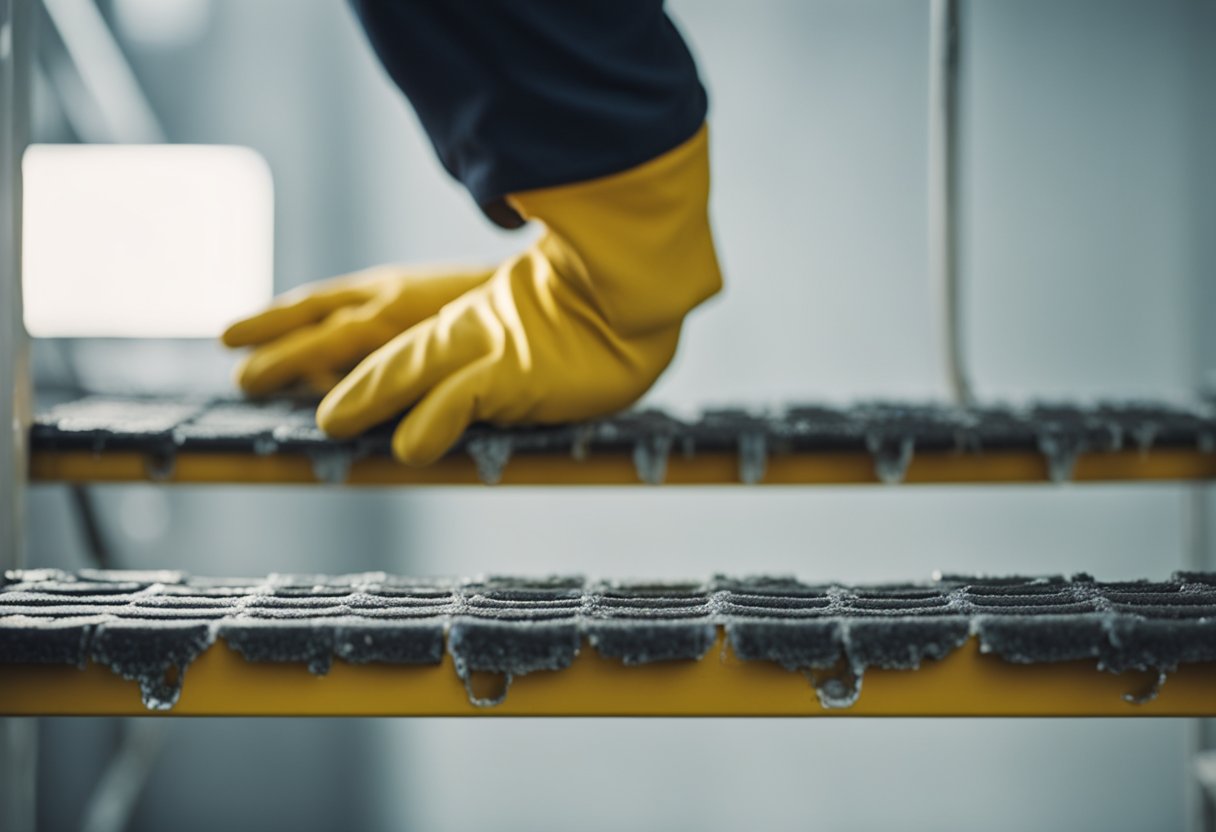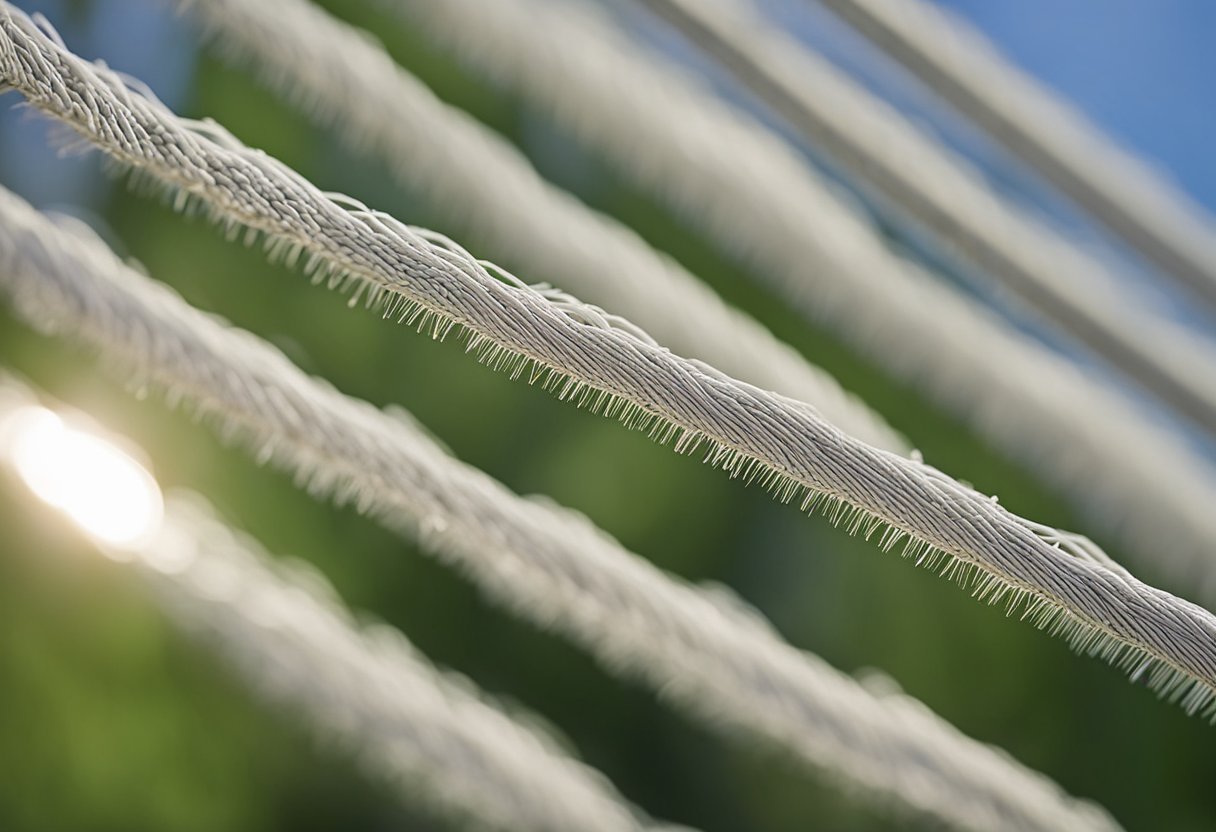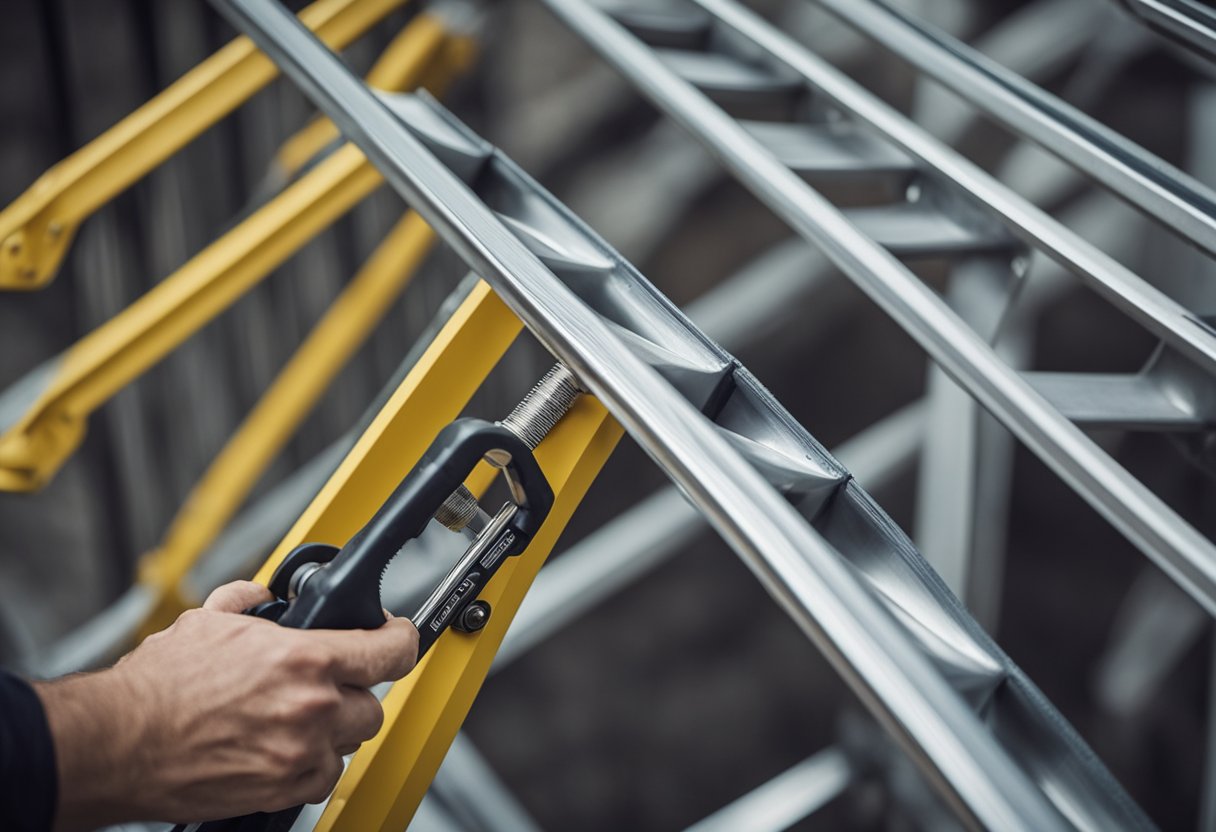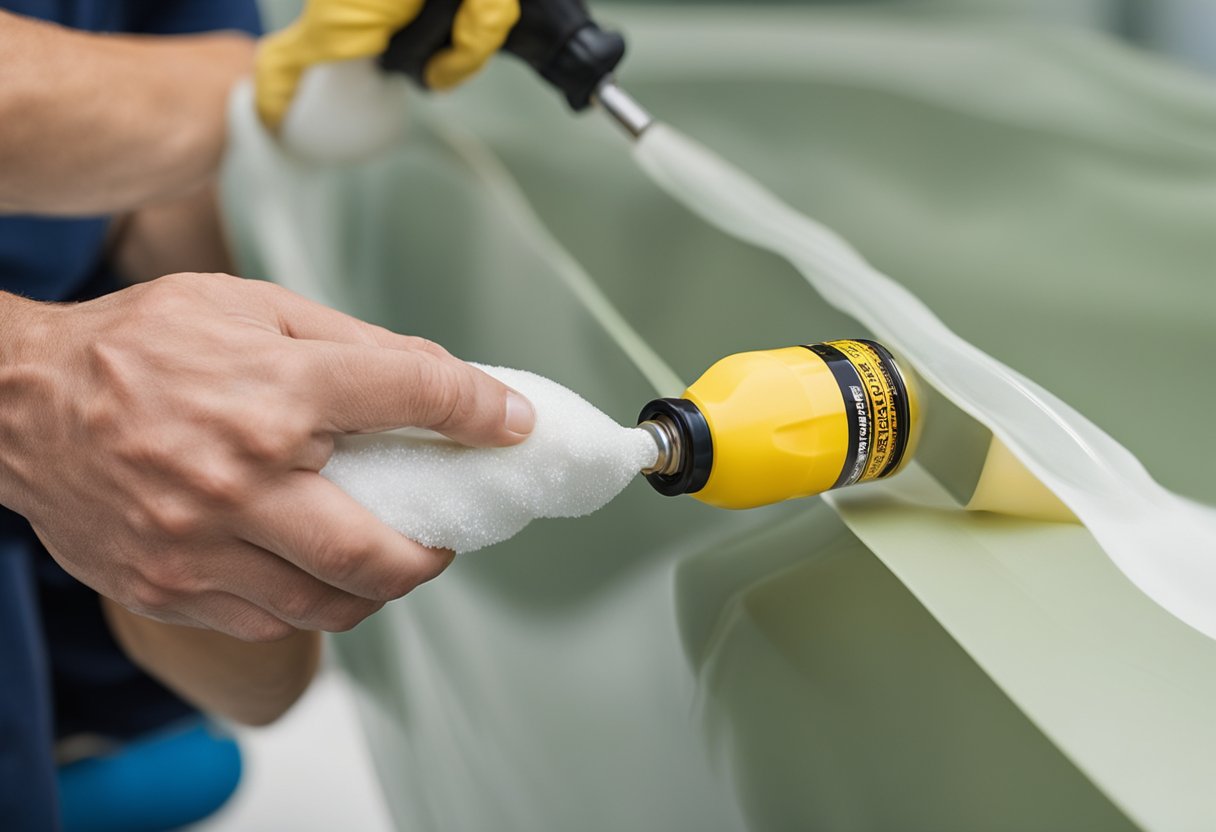As a homeowner or contractor, you may have encountered the issue of fiberglass ladders shedding. This can be a frustrating and potentially dangerous problem if not addressed properly. Shedding can occur due to various reasons such as exposure to chemicals, poor manufacturing, and UV rays. Shedding can also be caused by the stress placed on a fiberglass ladder.
Understanding the causes of fiberglass ladder shedding is the first step in preventing it. This article will provide you with tips and solutions to prevent shedding, repair a shedding fiberglass ladder, and recognize when it’s time to replace your ladder. Additionally, we’ll cover safety measures to take when handling fiberglass ladders and additional tips and considerations to keep in mind.
Key Takeaways
- Shedding can occur due to various reasons such as exposure to chemicals, poor manufacturing, and UV rays.
- Regular inspection, cleaning, and maintenance can prevent fiberglass ladder shedding.
- Safety measures such as wearing gloves and protective clothing should be taken when handling fiberglass ladders.
Understanding Fiberglass Ladders
As a professional handyman, I have worked with different types of ladders, but fiberglass ladders are my favorite. These ladders are lightweight, strong, and non-conductive, which makes them ideal for electrical work. Unlike aluminum ladders, fiberglass ladders do not conduct electricity, which reduces the risk of electrocution.
Fiberglass ladders are made of reinforced plastic, which is made by impregnating glass fibers with resin. The fibers are then woven into a fabric, which is molded into shape. The resulting material is lightweight, strong, and durable, which makes it ideal for ladders.
Fiberglass ladders are also resistant to corrosion and rust, which makes them ideal for outdoor use. They can withstand exposure to harsh weather conditions without deteriorating. Unlike aluminum ladders, fiberglass ladders do not bend or warp under heavy loads.
However, one of the drawbacks of fiberglass ladders is that they can shed fibers over time. This is usually caused by exposure to UV rays, oxidation, or poor manufacturing processes. Shedding can make the ladder surface rough, which can be uncomfortable to climb and hold onto.
To prevent fiberglass ladder shedding, regular inspection and maintenance are necessary. Applying a protective coating or sealant can also help to reduce shedding. High-quality sealants or paints designed for fiberglass should be used for best results.
In summary, fiberglass ladders are lightweight, strong, and non-conductive, which makes them ideal for electrical work. They are also resistant to corrosion and rust, which makes them ideal for outdoor use. However, they can shed fibers over time, which can make the surface rough. Regular inspection and maintenance, as well as applying a protective coating, can help to reduce shedding.
Why Fiberglass Ladders Shed
As a fiberglass ladder owner, you might have noticed that your ladder sheds small fibers. This can be frustrating, especially if you use the ladder frequently. Shedding is a common problem with fiberglass ladders, and it can be caused by several factors.
One of the main reasons why fiberglass ladders shed is wear and tear. Over time, the ladder’s surface can become rough and abrasive, causing the fibers to loosen and shed. This is especially true if the ladder is exposed to extreme temperatures, corrosive substances, or direct sunlight.
Another reason why fiberglass ladders shed is degradation. Fiberglass ladders are made of a composite material that can break down over time. This can be accelerated by exposure to high humidity, weathering, oxidation, and other environmental factors. As the material degrades, it can become more prone to shedding.
UV radiation is another factor that can cause fiberglass ladders to shed. UV rays can break down the material and cause it to become brittle and weak. This can lead to shedding, as well as other issues such as cracking and splitting.
To prevent fiberglass ladder shedding, it’s important to take steps to protect your ladder from these factors. Regularly inspecting the ladder for signs of wear and damage, cleaning it to remove dirt and debris, and applying a protective coating can all help to reduce shedding and extend the life of your ladder.
Preventing Fiberglass Shedding
https://www.youtube.com/watch?v=CHoa_A3c0_c&embed=true
As someone who has worked with fiberglass ladders for years, I understand the frustration of dealing with ladder shedding. Shedding occurs when the fiberglass ladder’s surface becomes rough and starts to shed small threads of fiberglass, which can be dangerous and irritating to the skin. Fortunately, there are several preventive measures that you can take to stop fiberglass ladder shedding.
Regular Cleaning and Inspection
One of the best ways to prevent fiberglass ladder shedding is by performing regular cleaning and inspection. Over time, dirt, dust, and other debris can accumulate on the ladder’s surface, causing it to become rough and prone to shedding. Therefore, it is essential to clean the ladder thoroughly after each use, using a soft brush or cloth and mild detergent. Regular inspection can also help identify any potential issues before they become major problems.
Waxing and Protective Finish
Another effective way to prevent fiberglass ladder shedding is by applying wax or a protective finish to the ladder’s surface. A good quality wax or finish can help seal the ladder’s surface, preventing dirt and debris from accumulating and causing shedding. Before applying wax or finish, it is important to clean the ladder thoroughly and allow it to dry completely.
Proper Storage
Proper storage is also critical in preventing fiberglass ladder shedding. When not in use, the ladder should be stored in a dry, cool place, away from direct sunlight and moisture. Exposure to extreme temperatures and moisture can cause the ladder’s surface to become brittle, leading to shedding.
Preventive Measures
Finally, taking preventive measures can help stop fiberglass ladder shedding from occurring. For example, using a ladder that is rated for the weight and height of the job can help prevent stress on the ladder, which can lead to shedding. Additionally, avoiding chemical exposure and using a ladder that is made from high-quality materials can help prevent shedding.
By following these preventive measures, you can stop fiberglass ladder shedding and ensure that your ladder is safe and reliable for years to come.
Repairing a Shedding Fiberglass Ladder
https://www.youtube.com/watch?v=qYQX20sWVsE&embed=true
If your fiberglass ladder is shedding, it’s important to repair it as soon as possible to prevent further damage. Here are the steps I recommend for repairing a shedding fiberglass ladder:
-
Sand the affected area: Use sandpaper to sand the area where the fiberglass is shedding. This will help the new resin adhere to the ladder.
-
Clean the ladder: Use a clean cloth to wipe down the ladder and remove any debris or dust from sanding.
-
Apply fiberglass resin: Mix the fiberglass resin according to the manufacturer’s instructions and apply it to the affected area. Be sure to use enough resin to fully cover the area.
-
Add fiberglass mat or cloth: Cut a piece of fiberglass mat or cloth to size and lay it over the resin. Use a brush to gently press the mat or cloth into the resin.
-
Apply hardener: Mix the hardener according to the manufacturer’s instructions and apply it to the fiberglass mat or cloth.
-
Recoat the ladder: Once the hardener has cured, apply a coat of primer to the repaired area. This will help the new resin adhere to the ladder.
-
Paint the ladder: Finally, paint the ladder with a high-quality paint that is designed for use on fiberglass. This will help protect the ladder and prevent future shedding.
If you’re not comfortable with DIY repairs, you can also purchase a fiberglass repair kit or hire a professional to repair your ladder for you. Regardless of which method you choose, it’s important to repair your ladder as soon as possible to prevent further damage and ensure your safety while using it.
Safety Measures When Handling Fiberglass Ladders
As someone who has worked with fiberglass ladders for years, I understand the importance of taking safety measures when handling them. Fiberglass ladders are prone to shedding, which can lead to respiratory issues and skin irritation if the proper precautions are not taken. Here are some safety measures to consider when handling fiberglass ladders:
-
Wear protective gear: It is essential to wear protective gear when handling fiberglass ladders to protect yourself from the fiberglass dust and debris. I recommend wearing a dust mask, gloves, and safety glasses to prevent the fiberglass from getting into your eyes, nose, and mouth.
-
Work in a well-ventilated area: Fiberglass dust can be hazardous to your health, so it’s crucial to work in a well-ventilated area. If possible, work outside, or open windows and doors to ensure proper ventilation.
-
Follow ladder safety precautions: Fiberglass ladders can be heavy and awkward to handle, so it’s essential to follow ladder safety precautions. Always ensure the ladder is on a stable surface, and do not exceed the maximum weight capacity.
-
Inspect the ladder before use: Before using a fiberglass ladder, inspect it for any signs of wear or damage. Check the rungs, rails, and any other parts to ensure they are in good condition.
-
Handle the ladder with care: Fiberglass ladders can be fragile, so it’s essential to handle them with care. Avoid dropping or dragging the ladder, and do not use it as a lever or pry bar.
By following these safety measures when handling fiberglass ladders, you can reduce the risk of injury or illness. Always prioritize safety when working with any ladder, and take the necessary precautions to protect yourself from harm.
Recognizing When to Replace Your Fiberglass Ladder
As with any tool, a fiberglass ladder has a lifespan and will eventually need to be replaced. Knowing when to replace your ladder is crucial to ensure your safety while using it. Here are a few signs that it’s time to invest in a new ladder:
Structural Damage
If your fiberglass ladder has any visible structural damage, such as cracks or breaks, it’s time to replace it. Structural damage can weaken the ladder, making it unsafe to use. Even if the damage seems minor, it’s best to err on the side of caution and replace the ladder.
Damaged Fiberglass
Fiberglass ladders can easily become damaged, especially if they’re not properly maintained. If you notice any areas of the ladder where the fiberglass is chipping or shedding, it’s time to replace it. Damaged fiberglass can make the ladder unstable and unsafe to use.
Age
Even if your fiberglass ladder appears to be in good condition, it may still be time to replace it if it’s old. Fiberglass ladders have a life expectancy of around 10 years, so if your ladder is approaching or exceeding that age, it’s time to invest in a new one.
New Ladder
If you’re in the market for a new ladder, consider investing in a high-quality fiberglass ladder. A new ladder will not only be safer to use, but it will also last longer than an older, worn-out ladder.
In summary, recognizing when to replace your fiberglass ladder is crucial to ensure your safety while using it. Look out for signs of structural damage, damaged fiberglass, and age, and consider investing in a new ladder if you’re in the market for one.
Additional Tips and Considerations
When it comes to stopping fiberglass ladder shedding, a few additional tips and considerations can help ensure the ladder’s integrity and durability. Here are some things to keep in mind:
-
Inspections: Regular inspections of your fiberglass ladder can help identify any potential issues before they become a problem. Look for signs of corrosion, holes, or weathered fiberglass, and address these issues promptly.
-
Skin irritation: Fiberglass can cause skin irritation, so it’s important to wear protective clothing when working with it. Cover your skin and wear gloves to prevent contact with the fiberglass.
-
Electricity: Fiberglass ladders are non-conductive, which makes them a safer choice when working around electricity. However, it’s still important to take precautions and follow OSHA guidelines when working with electrical equipment.
-
Curing: If you’re applying a sealant or topcoat to your fiberglass ladder, make sure it has fully cured before using the ladder. Check the manufacturer’s instructions for recommended curing times.
-
Sandpaper: When sanding your fiberglass ladder, use 60-grit sandpaper to rough up the surface before applying a protective coating. After applying the coating, lightly sand the surface again with 100-grit sandpaper in a linear pattern to ensure even coverage.
-
Protective coating: Applying a protective coating, such as acrylic lacquer, can help prevent fiberglass ladder shedding. Make sure to follow the manufacturer’s instructions for application and curing.
-
Painting: If you choose to paint your fiberglass ladder, make sure to use a paint that is specifically designed for use on fiberglass. Clean the surface thoroughly with denatured alcohol before painting to ensure proper adhesion.
-
Sealant: Applying a sealant can also help prevent fiberglass ladder shedding. Look for a sealant that is designed for use on fiberglass and follow the manufacturer’s instructions for application and curing.
-
Topcoat: A topcoat can provide additional protection against shedding and other damage. Look for a topcoat that is designed for use on fiberglass and follow the manufacturer’s instructions for application and curing.
-
Wood: If your fiberglass ladder has wooden components, make sure to follow proper maintenance procedures to ensure their longevity. Keep the wood clean and dry, and apply a protective coating as needed.
By following these tips and considerations, you can help ensure your fiberglass ladder remains safe and functional for years to come.
Frequently Asked Questions
How can I prevent fiberglass from shedding?
Preventing fiberglass from shedding requires regular inspection and maintenance. Keep the ladder clean by removing dirt, debris, and any loose fibers. Consider applying a protective coating like Rainbow Fiberglass Protective Coating to shield the ladder from moisture and UV radiation.
What are some methods to stop fiberglass from splintering?
To stop fiberglass from splintering, you should avoid exposing it to harsh chemicals and high temperatures. Also, avoid overloading the ladder beyond its weight capacity. Consider applying a protective coating like Rainbow Fiberglass Protective Coating to prevent splintering.
Is there a way to seal fiberglass to prevent shedding?
Yes, you can seal fiberglass to prevent shedding. Homesteady suggests using lacquer to seal the fiberglass. Sand the damaged spot with 60-grit sandpaper before spraying the lacquer in a well-ventilated area. Allow the ladder to dry completely before use.
What is the best way to maintain a fiberglass ladder?
The best way to maintain a fiberglass ladder is to inspect it regularly for signs of wear, damage, or shedding. Keep it clean by removing dirt, debris, and any loose fibers. Avoid exposing it to harsh chemicals and high temperatures. Store it in a dry, cool place away from direct sunlight.
How long can I expect a fiberglass ladder to last?
The lifespan of a fiberglass ladder depends on several factors, including its quality, usage, and maintenance. A well-maintained fiberglass ladder can last for years. However, if it’s exposed to harsh chemicals and high temperatures, it may deteriorate faster.
How can I restore a weathered fiberglass ladder?
To restore a weathered fiberglass ladder, you can clean it with a mild detergent and water. Rinse it thoroughly and allow it to dry completely. Then, apply a protective coating like Rainbow Fiberglass Protective Coating to restore its shine and prevent further weathering.

Hi, I’m Sal Muller of Tooltrip.com. My DIY experience led me to understand essential power tools for home projects. Tooltrip.com guides enthusiasts and professionals in choosing right tools for any job. I provide concise top tool reviews for easier, efficient DIY.








